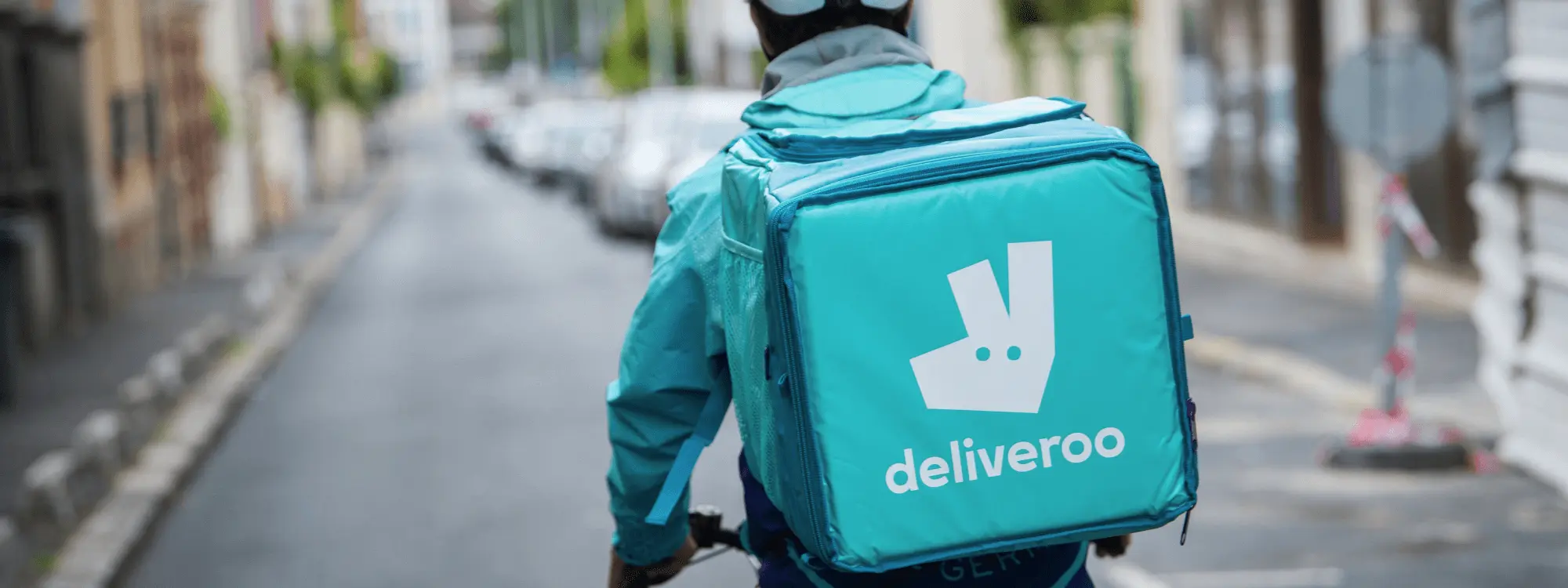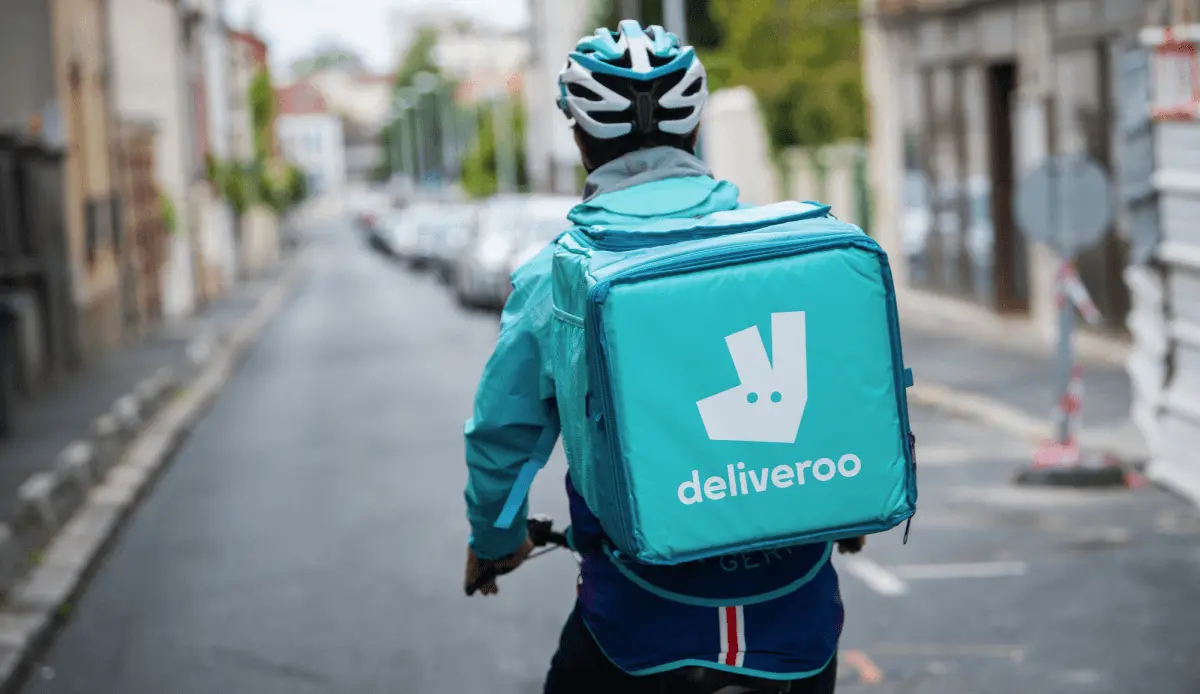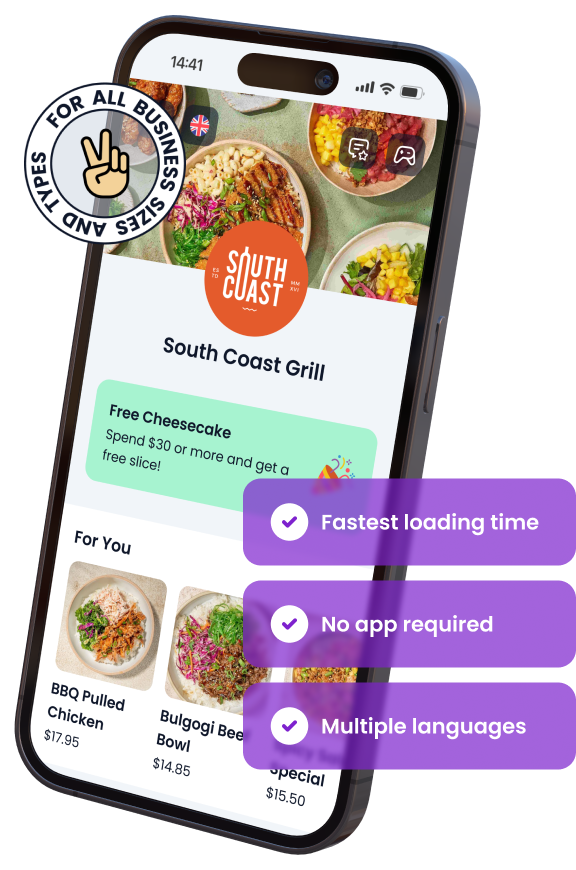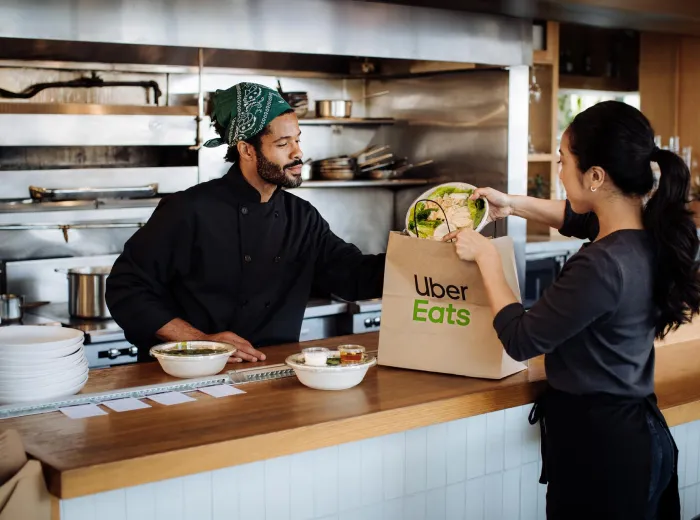

Deliveroo Fees and Commissions for Restaurants: Detailed 2025 Guide
Deliveroo has revolutionized the food delivery market, making it easier for restaurants to reach new customers while offering convenience for diners. However, partnering with Deliveroo comes with a range of fees and commissions that restaurant owners must navigate to maintain profitability. Understanding the breakdown of these fees, the potential benefits, and how to make the most of the platform is crucial for ensuring that your restaurant’s bottom line isn’t negatively impacted.
This guide delves into the specifics of Deliveroo’s fees and commissions, offering detailed insights into how the platform charges restaurants, how you can maximize profits despite the costs, and whether Deliveroo is ultimately worth it for your business. By the end of this article, you’ll have a clear understanding of how to manage and optimize your partnership with Deliveroo to benefit your restaurant.
Would you like to listen our deep-dive conversation about this article?
What is Deliveroo? Overview and Key Features
Deliveroo is one of the leading food delivery platforms, connecting restaurants with customers through a seamless ordering experience. Established in 2013, Deliveroo has grown rapidly across the globe, enabling restaurants to expand their reach and serve more customers without the need to set up their own delivery infrastructure. However, for restaurant owners, understanding how Deliveroo operates and what benefits it offers is essential for leveraging the platform effectively.
Deliveroo’s Role in Food Delivery
Deliveroo plays a vital role as a third-party service that handles the logistics of food delivery, enabling restaurants to focus on their core operations. By acting as the middleman between the restaurant and the customer, Deliveroo offers:
- Access to a large customer base through its app and website
- A delivery fleet that manages the transport of food from restaurants to customers
- Real-time tracking for both restaurants and customers to monitor deliveries
- Payment processing, reducing the need for restaurants to handle customer transactions directly
Main Benefits for Restaurants
Deliveroo offers multiple advantages to restaurants, particularly for those looking to increase sales without the overhead costs of an in-house delivery system. Key benefits include:
- Increased Visibility: Restaurants can reach more customers through Deliveroo’s platform, expanding their customer base.
- Operational Efficiency: Restaurants don’t have to manage a delivery team, as Deliveroo takes care of all logistical elements.
- Data and Insights: Deliveroo provides restaurants with valuable data on customer preferences and order trends, helping owners make informed business decisions.
- Flexible Marketing Tools: Deliveroo offers promotional options like discounts or sponsored listings to help restaurants boost their visibility and attract more orders.
How Deliveroo Works for Restaurant Partners
Deliveroo’s operation model for restaurants is straightforward. After signing up, restaurants gain access to a platform where they can list their menu items and receive orders. Here’s how the process works:
- Restaurant Setup: Restaurants upload their menu and pricing, set delivery areas, and customize the order process.
- Receiving Orders: When a customer places an order, it is sent to the restaurant through Deliveroo’s platform.
- Preparation: The restaurant prepares the food, and Deliveroo’s delivery riders pick it up.
- Delivery: The rider ensures the food is delivered to the customer, and both parties can track the order status in real time.
- Payments: Restaurants receive payments from Deliveroo after deducting commissions and service fees, typically on a weekly basis.
By simplifying the logistics of food delivery, Deliveroo helps restaurants focus on what they do best—preparing great food—while reaching a broader audience.
How Deliveroo Fees Work for Restaurants
Deliveroo charges restaurants various fees that cover the cost of using its platform, delivery services, and marketing tools. These fees can have a significant impact on a restaurant’s profitability, so it’s important for owners to fully understand how they are structured. In this section, we will break down the key fees charged by Deliveroo and how they affect your restaurant’s bottom line.
Commission Structure Breakdown
Deliveroo primarily operates on a commission-based model, meaning restaurants pay a percentage of each order’s total value. The exact commission rate varies based on a number of factors, such as the type of restaurant and its location, but generally falls between 25% and 35% per order. Here’s a closer look at the structure:
- Flat-rate commissions: Deliveroo often charges a flat percentage of each order, which can be higher for premium or larger restaurant chains.
- Variable commissions based on order value: In some cases, the commission rate might vary depending on the total order value. Larger orders could incur a lower percentage, while smaller orders might be charged a higher rate.
Additional Service Fees
In addition to the commission, Deliveroo may charge additional service fees to cover operational costs, especially related to delivery. These fees typically include:
- Delivery fees: This is what customers pay to have their food delivered, but restaurants may also incur a delivery service charge if using Deliveroo’s fleet of riders.
- Service charges: Some restaurants may face extra service fees, particularly if they choose to use premium services like Deliveroo Editions (cloud kitchens).
- Marketing fees: If restaurants opt for additional visibility, such as through sponsored listings or promotions, they may be charged extra for these marketing services.
VAT and Taxes on Fees
Deliveroo fees are also subject to local taxes and VAT, which can further increase the overall cost for restaurants. Here’s how taxes factor into the fees:
- VAT on commissions and services: Deliveroo applies VAT on the commissions and service fees it charges restaurants. This means that the total fee paid by the restaurant will include an additional percentage for VAT.
- Region-specific taxes: Depending on the location of your restaurant, you may also be subject to other region-specific taxes, which should be considered when calculating the total cost of using Deliveroo.
By understanding Deliveroo’s fee structure, restaurants can better plan their pricing strategies and optimize their use of the platform to maintain profitability while reaching new customers.
Types of Fees Charged by Deliveroo
Deliveroo’s fee structure is made up of several components that restaurants must consider when partnering with the platform. These fees go beyond just commissions, impacting everything from setup to ongoing operations. It’s essential for restaurant owners to understand the different types of fees involved to effectively manage costs and maintain profitability.
Fixed vs. Variable Fees
Deliveroo charges a mix of fixed and variable fees, each impacting your business differently:
- Fixed fees: These are one-time or recurring fees that do not change based on the order size. An example is the setup fee for onboarding your restaurant onto the platform.
- Variable fees: These fees fluctuate depending on the value of each order. Commissions, for instance, are a percentage of the total order value and can vary based on different factors such as the type of cuisine, location, and restaurant volume.
Understanding the balance between fixed and variable fees is crucial for maintaining control over your restaurant’s financials.
Setup Fees for Restaurants
Deliveroo may charge a one-time setup or onboarding fee when a restaurant initially joins the platform. This fee typically covers:
- Account creation and setup: Getting your restaurant listed on Deliveroo’s app and website.
- Menu uploading: Assistance with adding your menu, pricing, and restaurant details.
- Training and support: Some setup fees may include training sessions to familiarize restaurant staff with the platform.
Though this is a one-time cost, restaurants should consider it when budgeting for platform use.
Order Processing Fees
Every time a customer places an order through Deliveroo, the platform charges an order processing fee. These fees usually include:
- Transaction fees: This covers the cost of processing the payment, which can range from 1% to 3% of the total order.
- Payment gateway fees: Deliveroo may charge a small fee for using its payment gateway to handle customer transactions.
Order processing fees are generally deducted before the restaurant receives payment for the order, so it’s important to account for them in your pricing strategy.
Optional Marketing and Promotion Fees
Deliveroo offers a range of marketing tools to help restaurants increase their visibility on the platform. While these tools can help drive more orders, they come at an additional cost:
- Sponsored listings: Pay to have your restaurant appear at the top of search results within the Deliveroo app, increasing the likelihood of receiving orders.
- Discount promotions: Restaurants can participate in Deliveroo-run promotions, such as offering discounts to new customers, but this cost is typically borne by the restaurant.
- Loyalty programs: Some restaurants opt to create loyalty incentives through Deliveroo, encouraging repeat customers but at the cost of offering discounts or free items.
These optional marketing fees can add up, so restaurants should carefully evaluate the return on investment before opting in.
By understanding the different types of fees Deliveroo charges, restaurant owners can make informed decisions about how to price their menu, budget for additional costs, and evaluate the overall profitability of using the platform.
How Much Does Deliveroo Charge in Commissions?
Deliveroo’s commission rates are a crucial factor for restaurant owners to consider, as they can significantly impact overall profitability. These commissions are charged as a percentage of each order and vary depending on multiple factors. In this section, we’ll explore the average commission rates, what influences them, and how these fees are calculated.
Average Commission Rates by Restaurant Type
Deliveroo’s commission rates generally range between 25% and 35% of each order’s total value. However, these rates can differ based on the type of restaurant and its operational model:
- Fast food and quick-service restaurants: Typically, these restaurants see commission rates closer to 25% since they tend to handle higher volumes of lower-cost orders.
- Fine dining restaurants: Higher-end establishments often face commissions closer to 30-35%, as the order values are generally higher, but the delivery frequency is lower.
- Cafes and small eateries: Smaller venues or cafes often pay commission rates in the mid-range, around 28-30%, depending on their location and customer demand.
Understanding where your restaurant fits within these categories will help you anticipate what commission rate you might be charged.
Factors That Affect Commission Percentages
Deliveroo’s commission rates aren’t fixed; they can vary based on a number of influencing factors. Some of the key factors include:
- Location: Restaurants located in high-demand areas, such as city centers, may face higher commission rates compared to those in smaller towns or rural areas.
- Order volume: Restaurants with higher order volumes may be able to negotiate lower commissions, as Deliveroo values their consistent business. Conversely, lower-volume restaurants might face higher fees.
- Exclusivity agreements: Some restaurants that sign exclusive contracts with Deliveroo may receive lower commission rates in exchange for not partnering with other delivery platforms.
- Type of cuisine: Different types of cuisine may attract different commission rates based on customer demand and average order size. For example, a highly sought-after cuisine like sushi might have a different rate compared to a more common offering like pizza.
How Commissions are Calculated
Deliveroo calculates its commission as a percentage of the total order value, which includes both the food cost and any additional charges, such as delivery fees. Here’s how the commission is generally calculated:
- Customer places an order: The total order value includes the price of the food and any additional charges (e.g., drinks, sides).
- Commission deducted: Deliveroo deducts its commission from the total order value.
- Restaurant receives payment: After deducting the commission, Deliveroo transfers the remaining balance to the restaurant.
For example, if a customer places an order worth $100 and the commission rate is 30%, Deliveroo would deduct $30, leaving the restaurant with $70.
By understanding how much Deliveroo charges in commissions and the factors that influence these rates, restaurant owners can make more informed decisions about their pricing strategies and evaluate whether the platform is a profitable choice for their business.
Comparing Deliveroo Fees to Other Platforms
When choosing a food delivery service, restaurant owners often compare the fees and commissions of different platforms to determine which one provides the best value. Deliveroo is a leading platform, but there are several other popular options, including UberEats and Just Eat, each with its own fee structure. This section will help you understand how Deliveroo’s fees stack up against the competition, so you can make an informed decision about which platform is right for your restaurant.
Deliveroo vs UberEats: Fee Structures Compared
Deliveroo and UberEats are two of the most widely used food delivery platforms, but their fee structures differ in important ways:
- Commission rates: Both platforms charge similar commission rates, typically between 25% and 35%. However, UberEats tends to charge slightly higher rates for fine dining establishments, while Deliveroo’s rates are more consistent across different restaurant types.
- Service fees: UberEats often charges a service fee on top of the commission, which can add 2-3% to the cost for restaurants. Deliveroo, on the other hand, includes most of its operational costs within its commission rate, making it slightly simpler to understand.
- Promotions and marketing fees: Both platforms offer optional marketing tools, but UberEats is known for running frequent promotions that encourage restaurants to offer discounts in exchange for greater visibility. Deliveroo’s marketing fees are more straightforward, but they may not provide the same level of exposure as UberEats’ promotions.
Deliveroo vs Just Eat: Which is More Affordable?
Just Eat is another popular food delivery platform, particularly in the UK and Europe, and it operates differently from both Deliveroo and UberEats:
- Commission rates: Just Eat generally charges lower commission rates than Deliveroo, often in the range of 14% to 18%. This makes it an attractive option for restaurants looking to minimize their commission costs.
- Delivery model: One key difference is that Just Eat allows restaurants to use their own delivery drivers, which can significantly reduce fees. If the restaurant handles its own deliveries, Just Eat only charges a lower commission for using its platform to process orders.
- Service fees: While Just Eat’s overall fees are lower, it does charge additional service fees for restaurants that use its fleet of drivers, bringing the total cost closer to Deliveroo’s commission rates.
Which Platform Has the Lowest Commissions?
When comparing food delivery platforms, the lowest commission rate isn’t always the best deal. The right platform for your restaurant depends on several factors:
- Volume of orders: If your restaurant receives a high volume of orders, Deliveroo’s slightly higher commissions might be worth it for the customer base they provide. On the other hand, lower-volume restaurants may find Just Eat’s lower commissions more suitable.
- Delivery options: Restaurants that want more control over their delivery process might prefer Just Eat, which allows them to use their own drivers and pay a lower fee. Deliveroo, however, handles all deliveries, which is ideal for restaurants without a dedicated delivery staff.
- Marketing and exposure: Deliveroo and UberEats both offer more comprehensive marketing tools than Just Eat, which could help restaurants gain visibility and increase sales—something to consider if you want to invest in growing your customer base through promotions.
Ultimately, choosing between Deliveroo, UberEats, and Just Eat comes down to understanding the full scope of fees and how they align with your restaurant’s operational needs. By comparing commission rates, service fees, and marketing opportunities, you can select the platform that offers the best balance between cost and value for your business.
Can Restaurants Negotiate Deliveroo Fees?
For many restaurant owners, the high commission rates and fees imposed by Deliveroo can significantly cut into profits. While the platform’s fees are generally standardized, some restaurants have managed to negotiate better terms, depending on their specific circumstances. In this section, we’ll explore whether it’s possible to negotiate Deliveroo fees and provide strategies for reducing your costs.
Factors that Influence Negotiation
Not all restaurants are in a position to negotiate lower fees with Deliveroo, but certain factors can increase your bargaining power:
- Order volume: Restaurants with high order volumes have a stronger case for negotiating lower commission rates. Deliveroo may be more willing to offer reduced fees to retain businesses that consistently generate significant revenue.
- Exclusivity agreements: Deliveroo is sometimes open to negotiating lower fees if a restaurant agrees to use their platform exclusively. In exchange for being the sole delivery partner, Deliveroo may offer more favorable commission rates.
- Restaurant chain status: Larger restaurant groups or chains may have better negotiating leverage due to the potential for higher overall sales. Independent restaurants, on the other hand, may find it more difficult to secure fee reductions.
Restaurants with one or more of these characteristics have a higher chance of successfully negotiating better terms with Deliveroo.
Tips for Reducing Your Deliveroo Fees
Even if direct negotiation isn’t an option for all restaurants, there are a few strategies you can implement to lower your overall Deliveroo costs:
- Bundle services: If you’re using multiple Deliveroo services, such as Deliveroo Editions (cloud kitchens) or marketing tools, you might be able to bundle these services and negotiate a discounted rate.
- Leverage order volume: If your restaurant consistently hits a high number of orders, use this as leverage in negotiations. Emphasize the value you bring to the platform in terms of customer retention and revenue generation.
- Offer exclusivity: Consider negotiating for lower fees in exchange for exclusivity. While this limits your presence on other delivery platforms, it could result in significant savings if Deliveroo agrees to lower your commission rate.
By taking these steps, restaurants may be able to secure better terms, which can lead to higher profitability in the long run.
Case Studies: Restaurants That Have Successfully Lowered Fees
Several restaurants have been able to reduce their Deliveroo fees by using the strategies mentioned above. Here are a few real-world examples:
- Restaurant A: This small chain of fast-casual restaurants successfully negotiated a 5% reduction in commission rates by agreeing to an exclusivity deal with Deliveroo, increasing their profit margins significantly.
- Restaurant B: A high-volume sushi restaurant was able to negotiate a tiered commission rate based on monthly sales volume. As their order volume increased, their commission percentage decreased, making it more cost-effective to scale their business on the platform.
- Restaurant C: An independent café managed to bundle Deliveroo’s marketing services and delivery, securing a lower overall fee structure by offering to participate in Deliveroo’s frequent promotions in exchange for reduced commissions.
By following the examples of these restaurants, you can approach negotiations with Deliveroo more strategically, potentially lowering your fees and improving your restaurant’s financial outlook.
How to Maximize Profit Despite Deliveroo Fees
Even though Deliveroo’s fees and commissions can reduce a restaurant’s margins, there are several strategies you can implement to maximize your profits. By optimizing your menu, leveraging marketing tools, and encouraging direct orders, you can make the most of your partnership with Deliveroo while maintaining a healthy bottom line.
Optimizing Menu Prices to Cover Commission Costs
One of the most effective ways to counteract Deliveroo’s commission fees is by adjusting your menu prices to account for the additional costs. Consider these strategies:
- Increase prices for delivery orders: Many restaurants slightly increase their prices on delivery platforms compared to in-house dining to offset the commission charges. While this may not deter most customers, it can help balance out the higher fees.
- Bundle items: Create combo meals or offer discounts on bundled items. Bundling can increase the average order value while also justifying a slight price increase. Customers often perceive bundled items as better value, even if the total cost is slightly higher.
- Focus on high-margin items: Highlight or promote menu items that have a higher profit margin. For example, drinks and sides often have lower production costs but can be sold at a markup, helping to boost overall profitability on each order.
These pricing adjustments can ensure that your restaurant stays profitable, even with Deliveroo’s commission fees in place.
Encouraging Direct Orders Through Marketing
Another way to maximize profits is by encouraging customers to order directly from your restaurant’s website or app, where you won’t have to pay Deliveroo’s commissions. Here’s how you can do it:
- Incentivize direct orders: Offer special discounts, loyalty points, or promotions exclusively for customers who order directly from your website or app. These incentives can attract repeat customers and reduce your reliance on third-party platforms like Deliveroo.
- Use social media: Actively promote your direct ordering options on social media platforms. Make sure customers know they can order from you directly and save, while still enjoying the convenience of delivery.
- Flyers and packaging inserts: Include flyers, discount codes, or QR codes in your delivery packaging that encourage customers to order directly next time. This is an easy, low-cost way to market your direct-order platform to customers who have already shown interest in your restaurant.
By shifting some of your customers to direct ordering, you can reduce your dependence on Deliveroo and improve your overall profit margins.
Utilizing Deliveroo’s Marketing Tools
While Deliveroo’s marketing tools come with an additional cost, using them strategically can help increase your order volume and revenue, making the fees worthwhile. Some options include:
- Sponsored listings: Pay for top placement in search results to get more visibility and attract new customers. This can be especially useful if you’re located in a highly competitive area.
- Discount promotions: Offer limited-time discounts to attract more orders. While this reduces your profit margin on individual orders, it can increase your overall order volume and build customer loyalty.
- Loyalty programs: Participate in Deliveroo’s loyalty programs to encourage repeat customers. Offering a free item after a certain number of orders or discounts on frequent purchases can drive repeat business and improve long-term profitability.
When used wisely, these tools can help restaurants attract new customers, increase repeat orders, and ultimately offset Deliveroo’s fees by driving higher sales volumes.
By implementing these strategies, restaurants can make Deliveroo a profitable part of their business model, even with the platform’s fees. The key is to balance the costs with actions that increase revenue, encourage direct orders, and optimize pricing for delivery customers.
Hidden Costs of Using Deliveroo
While Deliveroo’s fees and commissions are the most obvious costs associated with using the platform, there are several hidden costs that restaurant owners need to consider. These can have a significant impact on overall profitability if not managed carefully. In this section, we’ll highlight some of the less obvious expenses that come with using Deliveroo and how they can affect your bottom line.
Unforeseen Operational Costs
Partnering with Deliveroo can create additional operational expenses that may not be immediately apparent. These costs often arise from the need to meet the demands of delivery orders:
- Packaging costs: Deliveroo requires food to be packaged securely and in a way that maintains temperature and quality during transit. High-quality, eco-friendly packaging can be expensive, adding to the overall cost of each order.
- Increased staffing: Restaurants may need to hire additional kitchen staff to handle the higher volume of orders coming from Deliveroo, especially during peak hours. While this can help meet demand, it adds to labor costs.
- Longer prep times: The pressure to meet delivery deadlines can slow down kitchen operations, especially if Deliveroo orders come in at the same time as dine-in customers. This could lead to inefficiencies that increase labor and operational costs.
These operational costs can accumulate over time, affecting your restaurant’s profit margins.
Long-term Impact on Profit Margins
Deliveroo’s fees and commissions can erode profit margins over time, especially if restaurants are heavily reliant on delivery platforms for their revenue:
- High commission rates: The more orders you process through Deliveroo, the more you pay in commissions. Over time, this can result in a significant percentage of your profits being taken by the platform.
- Lower margins on discounted items: If you participate in Deliveroo’s promotions, offering discounts or special deals, you could end up with lower profit margins on those orders. This is compounded by the fact that you’re still paying commission fees on the full order value.
- Customer expectations: Customers on delivery platforms like Deliveroo often expect frequent promotions and low prices, making it harder to maintain healthy margins without consistently offering discounts.
It’s crucial to account for these long-term impacts when deciding how much to rely on Deliveroo for your sales.
By being aware of these hidden costs and planning accordingly, restaurant owners can better navigate the financial challenges of partnering with Deliveroo. Managing operational efficiency, adjusting pricing strategies, and balancing dine-in with delivery orders are key to maintaining profitability in the face of these extra expenses.
Is Deliveroo Worth It for Your Restaurant?
Deciding whether to partner with Deliveroo is a critical decision for restaurant owners. While the platform offers access to a broader customer base and the convenience of third-party delivery services, the associated costs can eat into profit margins. To determine if Deliveroo is worth it for your business, you need to carefully weigh the benefits against the costs.
How to Determine if Deliveroo is a Good Fit
Not every restaurant will benefit equally from partnering with Deliveroo. Here are some factors to consider when deciding if it’s a good fit for your business:
- Order volume potential: If your restaurant has a high demand for delivery, the platform’s fees may be justified by the increased sales volume. However, if delivery demand is low, you may find the fees too costly.
- Type of cuisine: Fast food and casual dining tend to perform better on Deliveroo because of the convenience factor, while fine dining or niche cuisine might struggle to attract sufficient orders to offset the commission fees.
- Operational capacity: Can your kitchen handle the extra volume of orders without negatively impacting in-house dining? If you need to hire extra staff or invest in new equipment, these added costs should be factored into your decision.
By evaluating these factors, you can better assess whether Deliveroo is a viable option for your restaurant.
Pros and Cons of Partnering with Deliveroo
Like any business decision, there are both advantages and disadvantages to working with Deliveroo. Here’s a breakdown to help you make an informed choice:
Pros:
- Increased reach: Deliveroo allows you to access a much larger customer base than traditional in-house dining or your own delivery system could achieve.
- No need for delivery staff: You save on the costs and logistics of hiring and managing a delivery team, as Deliveroo takes care of the entire delivery process.
- Marketing and promotion tools: Deliveroo offers promotional tools to help increase visibility and attract new customers, including sponsored listings and discounts.
Cons:
- High commission fees: Deliveroo’s commissions, typically ranging from 25% to 35%, can significantly reduce profit margins, especially for smaller restaurants.
- Reliance on third-party platforms: Relying too heavily on Deliveroo can make your restaurant vulnerable if the platform changes its fee structure or if there are issues with delivery.
- Limited customer loyalty: Many customers on Deliveroo are more loyal to the platform than to the individual restaurant, making it harder to build long-term, repeat business.
By carefully weighing these pros and cons, you can determine if Deliveroo’s benefits outweigh the costs for your specific business model.
In the end, the decision to use Deliveroo will depend on your restaurant’s specific needs, its ability to manage the associated costs, and the value that the platform can bring to your business in terms of reach and sales.
Alternatives to Deliveroo for Restaurant Owners
While Deliveroo is a popular choice for food delivery, it’s not the only option available to restaurant owners. Depending on your business needs, there are other platforms and strategies that could offer more flexibility or lower fees. In this section, we’ll explore the alternatives to Deliveroo, highlighting their pros and cons, so you can find the best solution for your restaurant.
In-house Delivery vs. Third-Party Platforms
One of the first decisions restaurant owners must make is whether to handle delivery in-house or to rely on third-party platforms like Deliveroo. Here’s a breakdown of both options:
In-house Delivery:
- Pros:
- Full control over the customer experience, from order placement to delivery.
- No third-party commissions, allowing you to keep more of the profit.
- Ability to create stronger customer relationships and loyalty through direct interaction.
- Cons:
- Requires hiring and managing delivery staff, which can increase labor costs.
- Additional logistical challenges, such as vehicle maintenance and fuel costs.
- Limited reach compared to third-party platforms with established customer bases.
Third-Party Platforms:
- Pros:
- Access to a wide audience without the need to build a delivery infrastructure.
- Lower upfront investment compared to setting up your own delivery system.
- Established platforms with marketing tools and customer trust.
- Cons:
- High commission fees (up to 35%), cutting into your profit margins.
- Limited control over the customer experience and delivery process.
- Increased competition on the platform, making it harder to stand out.
Deciding between in-house delivery and third-party platforms will depend on your restaurant’s resources and long-term goals.
Exploring Other Food Delivery Platforms
Beyond Deliveroo, there are several other food delivery platforms that may offer different fee structures, audience reach, or marketing opportunities. Here’s a comparison of some of the most popular alternatives:
UberEats:
- Commission rates: Typically 30-35% per order, similar to Deliveroo, but UberEats may offer more flexible pricing for high-volume restaurants.
- Unique features: UberEats is known for its frequent promotions and marketing campaigns, which can increase visibility but often come at an additional cost. It also integrates well with the broader Uber platform, reaching a large and diverse audience.
Just Eat:
- Commission rates: Lower than Deliveroo, often between 14% and 18%, especially if restaurants handle their own deliveries.
- Unique features: Just Eat allows restaurants to use their own delivery staff, which can save on costs if you’re already equipped to handle deliveries. This platform is particularly popular in the UK and Europe.
DoorDash (available in select markets):
- Commission rates: Typically ranges between 15% and 30%, with options to customize delivery fees depending on the service level (basic, premium, etc.).
- Unique features: DoorDash offers flexible pricing tiers that allow restaurants to choose the level of service that best fits their needs. This includes options for customer pickup to further reduce fees.
By comparing these platforms, you can determine which one aligns with your business model and budget.
Building Your Own Delivery Infrastructure
For restaurants looking to maintain full control over the delivery process while avoiding third-party fees, building your own delivery infrastructure is another viable option. Here’s what to consider:
- Costs: Setting up an in-house delivery system requires investment in vehicles, fuel, insurance, and staff salaries. However, this upfront cost can be offset by the long-term savings from avoiding third-party commissions.
- Logistics: Managing delivery times, routes, and customer satisfaction becomes your responsibility. This requires dedicated staff and efficient systems to ensure timely deliveries and a high-quality experience.
- Marketing and customer acquisition: Without the built-in audience of third-party platforms, restaurants must invest in marketing to attract direct delivery customers. However, this can be an opportunity to strengthen customer relationships and create loyalty programs that keep customers coming back.
While building your own delivery system can be complex, it allows you to keep more of the profits and maintain control over the entire customer experience.
By exploring these alternatives to Deliveroo, restaurant owners can find a delivery solution that best fits their operational capacity, financial goals, and long-term strategy. Whether it’s partnering with another platform, setting up in-house delivery, or adopting a hybrid model, the right choice will ultimately depend on the unique needs of your business.
Partnering with Deliveroo can offer restaurants significant opportunities to expand their reach and boost sales, but it’s crucial to fully understand the platform’s fee structure and how it impacts profitability. While Deliveroo provides a convenient delivery solution and access to a large customer base, the associated fees, commissions, and hidden costs must be carefully managed. By optimizing menu pricing, leveraging marketing tools, and exploring alternative platforms or delivery options, restaurant owners can maximize their profits and make informed decisions about whether Deliveroo is the right fit for their business. Ultimately, balancing the benefits of increased exposure with the costs of third-party services will ensure your restaurant thrives in today’s competitive food delivery landscape.
Key Takeaways
By considering these key points, restaurant owners can make well-informed decisions on how to optimize their partnership with Deliveroo or choose alternative delivery solutions.
Deliveroo’s fees and commissions: Restaurants typically pay between 25% and 35% in commissions per order, along with additional service and marketing fees, which can impact overall profitability.
Fee structure complexity: Deliveroo charges both fixed and variable fees, including setup costs, transaction fees, and optional marketing expenses that restaurants need to factor into their budgeting.
Commission comparison: Deliveroo’s commission rates are similar to those of UberEats but tend to be higher than Just Eat, which offers lower fees, especially if restaurants handle their own deliveries.
Negotiation potential: Restaurants with high order volumes, exclusivity agreements, or strong negotiating leverage may be able to reduce their commission fees with Deliveroo.
Maximizing profits: Strategies such as adjusting menu prices, encouraging direct orders, and using Deliveroo’s marketing tools can help restaurants offset the costs of the platform’s fees.
Hidden costs: Beyond the visible fees, restaurants must also account for hidden costs like packaging, additional staffing, and potential long-term impacts on profit margins.
Exploring alternatives: In-house delivery systems or alternative platforms like UberEats and Just Eat may offer better financial flexibility depending on a restaurant’s needs and operational capacity.
ABOUT THE AUTHOR
Erkin Coban
Your Customers Deserve The Best
And we got Menuviel for them.
The fastest and easy-to-use online QR menu with 12+ unique features. Choose Menuviel and elevate your service quality to the next level.
Use free for the first 30 days.

In This Article

Free AI Tools for Restaurants
TRY NOW ➜

Enjoy discounted prices for Hong Kong
We adjust our subscription price for Hong Kong, so you enjoy all the same great features at a lower, more affordable rate.







